Recoil plays a huge role in just about every aspect of shooting. Whether you’re interested in self-defense or just shooting for enjoyment at the range, your ability to manage recoil impacts how many shots you’re able to put on target. If you’re new to shooting, or just need a quick reference, we put together the handgun recoil chart and the quick guide that follows in hopes it’ll help.
What is Recoil?
Recoil, also known as kick, is the force a handgun exerts back upon its user when it is fired. Because recoil flips the barrel of a handgun upward (a phenomenon called “muzzle flip”), it effectively undoes some or all of the effort the shooter put into aiming their handgun. That’s why lighter recoil makes it easier to direct rapid fire.
Very heavy recoil can also become uncomfortable, and even launch the handgun right out of an unprepared shooter’s hands. That’s the primary reason why you’d rather teach a child how to shoot with 32 grain 22 LR ammo instead of 44 Magnum ammo loaded with a 240 grain bullet that’s nearly 8-times as large.
| Cartridge | Bullet Weight (gr) | Bullet Velocity (fps) | Propellant Weight (gr) | Handgun Weight (lbs) | Handgun Referenced | Recoil Energy (ft lbs) |
|---|---|---|---|---|---|---|
| 5.7x28 | 40 | 1850 | 6.5 | 1.6 | FN Five-seveN | 1.7 |
| 22 LR | 40 | 1240 | 2.5 | 1.8 | Ruger Mark IV | 0.5 |
| 32 ACP | 71 | 703 | 3.2 | 1.3 | Charter Arms Mag Pug | 0.7 |
| 327 Federal Magnum | 100 | 1464 | 7.9 | 1.1 | Ruger LCR | 7.7 |
| 380 ACP | 90 | 930 | 3.7 | 0.8 | Glock 42 | 3.1 |
| 9mm | 115 | 1127 | 7.5 | 1.4 | Glock 17 | 4.6 |
| 9mm | 124 | 1061 | 5.9 | 1.4 | Glock 17 | 4.5 |
| 9mm | 147 | 996 | 6.3 | 1.4 | Glock 17 | 5.5 |
| 357 SIG | 147 | 1159 | 7.9 | 1.6 | SIG Sauer P239 | 6.7 |
| 38 Special | 125 | 990 | 5.3 | 0.9 | S&W 442 | 6.1 |
| 38 Special +P | 110 | 1165 | 8.1 | 0.9 | S&W 442 | 7.1 |
| 38 Super | 124 | 1304 | 8.1 | 2.2 | Kimber Pro Carry HD II | 4.5 |
| 357 Magnum | 158 | 1360 | 10.5 | 0.9 | S&W 360 | 19.7 |
| 40 S&W | 165 | 1008 | 5.8 | 1.5 | Glock 23 | 6.5 |
| 40 S&W | 180 | 920 | 5.3 | 1.5 | Glock 23 | 6.3 |
| 10mm | 165 | 1275 | 9.7 | 1.9 | Glock 20 | 8.7 |
| 44 Special | 180 | 911 | 5.9 | 2.4 | S&W Triple Lock | 3.9 |
| 44 Magnum | 240 | 1322 | 15.6 | 2.8 | S&W 629 | 13.7 |
| 45 GAP | 185 | 984 | 7.7 | 1.8 | Glock 37 | 6.6 |
| 45 ACP | 185 | 925 | 8 | 2.4 | M1911A2 | 4.4 |
| 45 ACP | 230 | 848 | 5.5 | 2.4 | M1911A2 | 5.4 |
| 454 Casull | 300 | 1609 | 27.8 | 4.5 | S&W 460XVR | 21.3 |
| 500 S&W | 400 | 1700 | 40 | 4.3 | S&W 500 | 45.1 |
What Impacts The Amount of Recoil?
Exactly how much recoil energy a handgun produces boils down to four factors:
- Bullet weight
- Bullet velocity
- Propellant charge weight
- Handgun weight
Let’s take a brief look at each of those factors.
Bullet Weight
 You wouldn’t appreciate recoil if your sole experience with firearms came from movies. This is because movie actors hate getting shot in real life. So, most directors insist they only fire blanks while filming. Blanks demonstrate one of the key factors that determine recoil: bullet weight. Blanks have no bullets, and therefore create virtually zero recoil when fired.
You wouldn’t appreciate recoil if your sole experience with firearms came from movies. This is because movie actors hate getting shot in real life. So, most directors insist they only fire blanks while filming. Blanks demonstrate one of the key factors that determine recoil: bullet weight. Blanks have no bullets, and therefore create virtually zero recoil when fired.
In the movie Snatch, a character named Bullet Tooth Tony fires a powerful 50 Action Express handgun at another charming fellow named Boris the Blade. (This doesn’t work out well for Boris.) When Bullet Tooth Tony fires that massive handgun, his hands hardly move. Apparently recoil hasn’t made its way to Hollywood and that part of the West Coast yet.
A real 50 AE cartridge, on the other hand, has a substantial 300 grain bullet. Its recoil is sufficient to flip the muzzle a good 30 degrees when even an experienced shooter fires it. Most experts agree that the 50 AE’s recoil is so pronounced that it has no practical application inside of tactical situations. Handgun recoil works on the principle of Newton’s third law of motion:
“For every action, there is an equal and opposite reaction.”
When a bullet exits a handgun’s barrel, it’s exerting just as much energy back in the direction of the shooter as the direction it’s flying in. The greater the mass a bullet has, the more recoil it’s capable of producing. Of course, even a 50 AE’s bullet will create zero recoil energy if it’s not moving. That’s where velocity comes into play.
Bullet Velocity

You typically see a cartridge’s muzzle velocity expressed in units of feet per second (fps). This is the rate at which the bullet is moving the instant it exits the barrel of a handgun.
Case in point, a 45 ACP’s 230 grain bullet has an approximate muzzle velocity of 830 fps. If that bullet maintained its muzzle velocity for one full second, then it would arrive 830 feet from its starting point. (It’s important to note that a bullet’s velocity decreases in direct relation to the distance it has covered, which depends on its ballistic coefficient, humidity, air pressure, and other factors that aren’t relevant to handgun recoil.)
In the simplest terms, the higher a bullet’s muzzle velocity, the more recoil energy it will generate. Picture a five ounce baseball. Now, imagine your reaction if a four-year-old threw that baseball at your head. You might not be thrilled about it, but you could still continue your day. Now, imagine your reaction to the same baseball if retired Yankees pitcher David Cone threw it at your head with all his might. Your reaction would be death, or at best a couple months hooked up to a machine. Note that the weight of the baseball never changed – only its velocity. The same principle applies to a bullet. The greater its velocity, the greater the energy a bullet will direct back at its shooter in the form of recoil.
Propellant Charge Weight
The weight of a cartridge’s propellant holds less influence over recoil energy, but it is still part of the equation. Everything that comes out of a handgun’s barrel will translate to recoil energy. This includes the mass of the propellant and the gasses it becomes during ignition. A 9mm round typically stores only four to six grains of propellant. That’s not much in relation to its 115, 124, or 147 grain bullet, but it still has mass. Therefore, we have to account for it.
Handgun Weight
The heavier a handgun is, the more recoil energy it will absorb. It’s easy to appreciate how this applies to the way handguns are designed. Go to a gun store and check out the pocket pistols. They’re chambered for 25 ACP, 22 LR, 22 WMR, and 380 ACP, which are all small cartridges with relatively lightweight bullets and propellant charges.
Now, have a look at the biggest handguns. They’re chambered for 357 Magnum, 44 Magnum, 500 S&W Magnum, and so on – all massive cartridges that require not only a sturdy handgun to absorb their energy during ignition, but a heavy one to help absorb some of their recoil.
The Handgun Recoil Equation

We measure recoil energy in foot-pounds (ft lbs). Foot pounds are units of energy equal to the amount required to raise one pound a distance of one foot. Muzzle energy and impact energy are also measured in ft lbs.
Recoil as a Formula
To calculate how many ft lbs of recoil energy a cartridge will generate, you need only use this equation, compliments of the good folks at SAAMI:

Note how this equation takes into account all four factors we just went over:
- Where: WE = Weight (in grains) of the ejecta (bullet or shot and wad column)
- VE = Velocity of ejecta in feet per second
- WPG = Weight of propellant gases in grains
- VPG = Velocity (fps) of propellant gases in feet per second
- 7000 = Conversion factor for grains to pounds
- WF = Weight of firearm in pounds
Plug all the variables into the equation, and you’ll get a round’s recoil energy.
The big problem with this formula is that it’s math. Unless there’s a math teacher to yell at you and threaten you with detention you probably don’t want to actually do math. But we’ll do math all day long on your behalf, that’s why we put the big recoil chart together at the top of the page. A couple important notes on this chart.
We consulted Accurate Powders’ reloading data for these hypothetical cartridges’ sample maximum propellant charge weights and muzzle velocities. (It’s a great resource available here.) Actual handgun cartridge bullet weights, propellant weights, and muzzle velocities can vary greatly. So, please use our chart as a loose reference. We also indicated which model handguns we used for the empty handgun weight portion of the data, which are rounded to the nearest tenth. The handgun you own may have a different weight.
Felt Recoil Energy
You can boil down recoil energy to a number because it’s objective. Exactly how much recoil you’re going to perceive is subjective, however. So, we can’t express that numerically. The handgun you’re using, the way that you hold it, and even the weight of your arms can all influence how much recoil you’re actually going to be subjected to. While calculating your ammo’s recoil energy can be educational, it’s not an exact measure of how much kick you’re going to experience.
What Recoil Energy Means for Performance
In general, recoil begins to feel uncomfortable when it hits the 15 ft lbs range. After that point any significant amount of time spent training might start to hurt. Again, this varies greatly by shooter, so like the oracle once said: “Know thyself.”
As another general rule, the more powerful recoil becomes, the more devastating an effect the bullet is going to have on its target. While it may be tempting to carry a handgun for self-defense that’s powerful enough to fell a bear, keep in mind that you may very well wish to fire more than one shot while you’re in a life or death scenario.
If your first shot flips your muzzle way off target, it’ll take that much more time to aim at your target again. Will your attacker give you that much time to line up another shot, especially after you’ve informed them that you mean to shoot them? Food for thought…

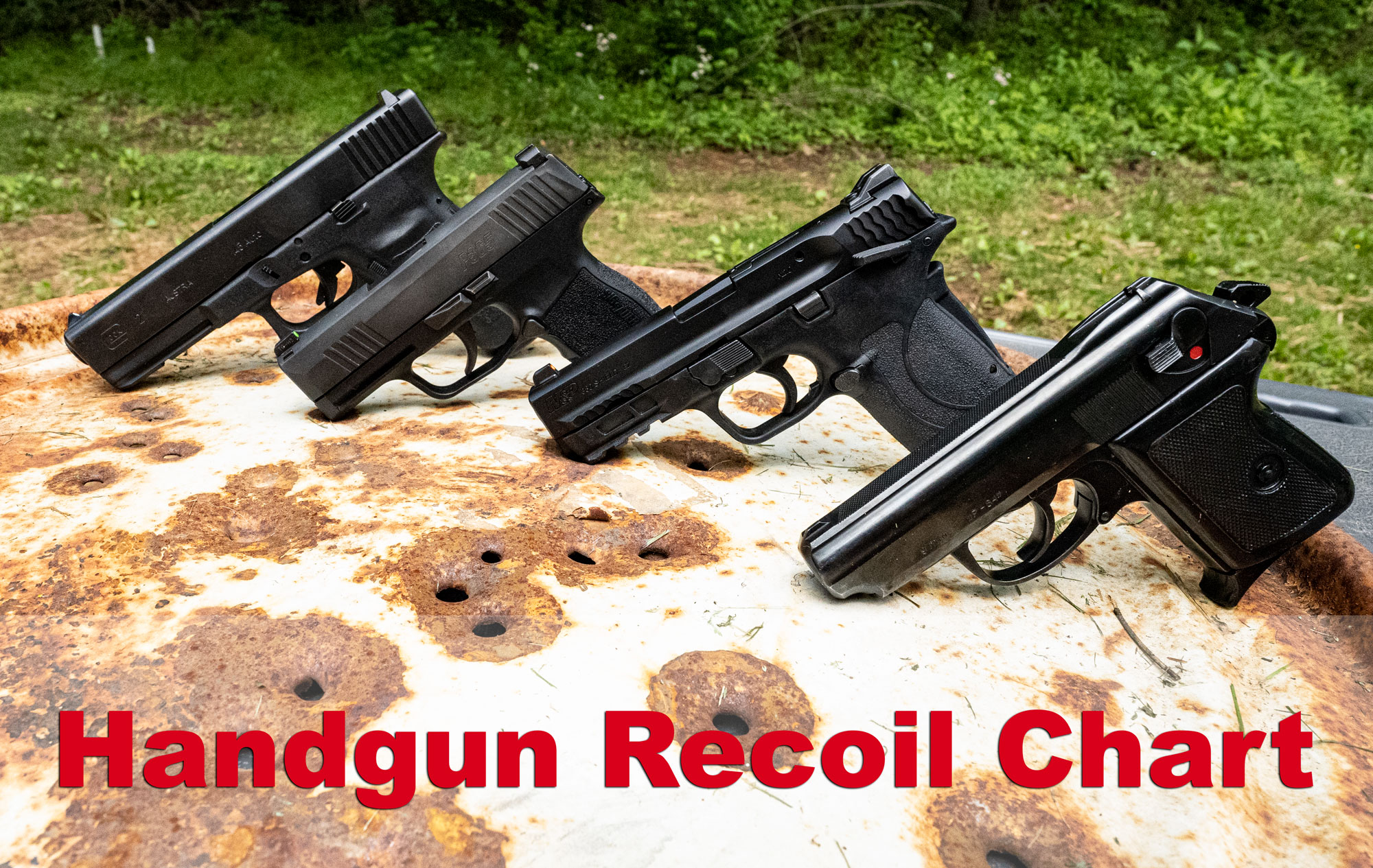
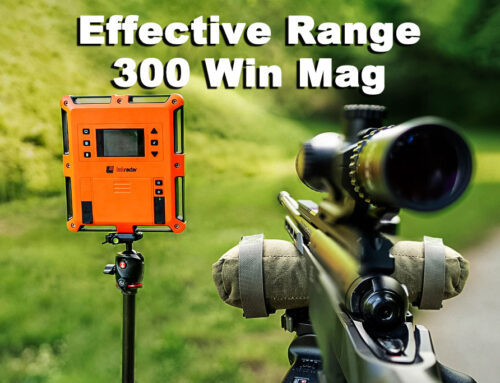
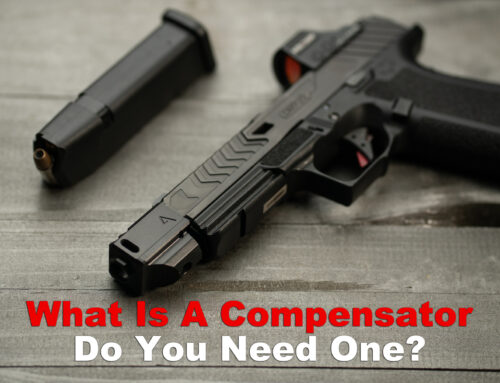
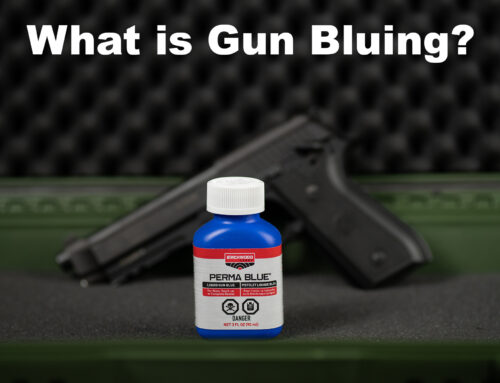
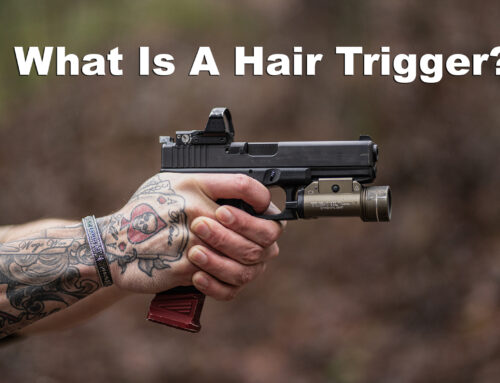
Great site! Been out of the country for a long time. Wow how things change. Very informative site, excellent work. Easy to understand. My Filipino wife, read this and quickly understood the difference of bullet weight and how much recoil she can expect. She has not fired yet, I got her on the Strikeman learning how to hold the weapon and the trigger pull. The understanding of the acronyms was a plus for me. I appreciate your work.
That’s awesome to hear Curtis, thank you for the feedback. It’s awesome to hear you’re introducing her to firearms and it sounds like you’re doing it the right way! She might find it interesting, we get questions from a ton of Filipino shooters living over in the Philippines asking if we can ship them ammo and general shooting questions. It seems like the competitive shooting leagues have a pretty good following over there.
I had to use this to support my argument that my husband (who is 3 weeks post op CABG (open heart) and is not allowed to lift more than 5 pounds for at least another 6 weeks, should NOT go shooting today.
He’s an experienced shooter, so am I. Why he didn’t think recoil would apply, idk (his argument, it’s not “lifting”).
Uh technically correct, but it would affect his healing sternum to be exposed to the recoil, which could go over his 5 pound limit, and I’d rather he didn’t take that chance. As a nurse you would think he’d take my word for it.
Men…..
Haha! Glad it was of some help Lynn. Though, it’s never good to hear it caused a canceled range trip! Hope he’s recovering well and it won’t be long until you both get to the range together!
The equation you listed in the article is for velocity. The energy equation is different. Both equations are listed in the SAAMI PDF you linked.
Thanks for the heads up Scott – we’ve updated and grabbed the correct formula from SAAMI.
I’m late to this thread. It told me much but I’m still wondering how barrel length affects recoil: is there a substantial difference between, say, a 3” barrel and a 3.3” barrel assuming same caliber?
There are a ton of other variables to consider here but I would imagine in a caliber, like 9mm, you won’t find much of a difference as a shooter between the way a 3″ barrel feels and a 3.3″ barrel feels if all other variables are the same.
So according to the formula the recoil energy is proportional to the weight of the gun divided by 164.34. If we go extreme and weld a 9mm pistol to am Abrams tank which is 50 tonnes + the recoil will be 50,000 times larger than from a standalone pistol. Right?
Haha – I certainly would take the tank’s firepower over the pistol’s! :)
To answer the question though, I believe the answer is no. There are two portions to the equation the weight of the firearm is also part of the denominator on the right hand side, which would drastically reduce the felt recoil if you add mass to the firearm while maintaining the same mass for the projectile.
I am considering buying either a 9mm or .45 acp in the small 3” kimber 1911. I would like to get the.45 but I’m wondering how much recoil it would have. I can handle recoil but I also want to be accurate on follow up shots and enjoy shooting it. I have a 5” kimber in .45 and love it but not sure if I would love it in a 3”. Thanks